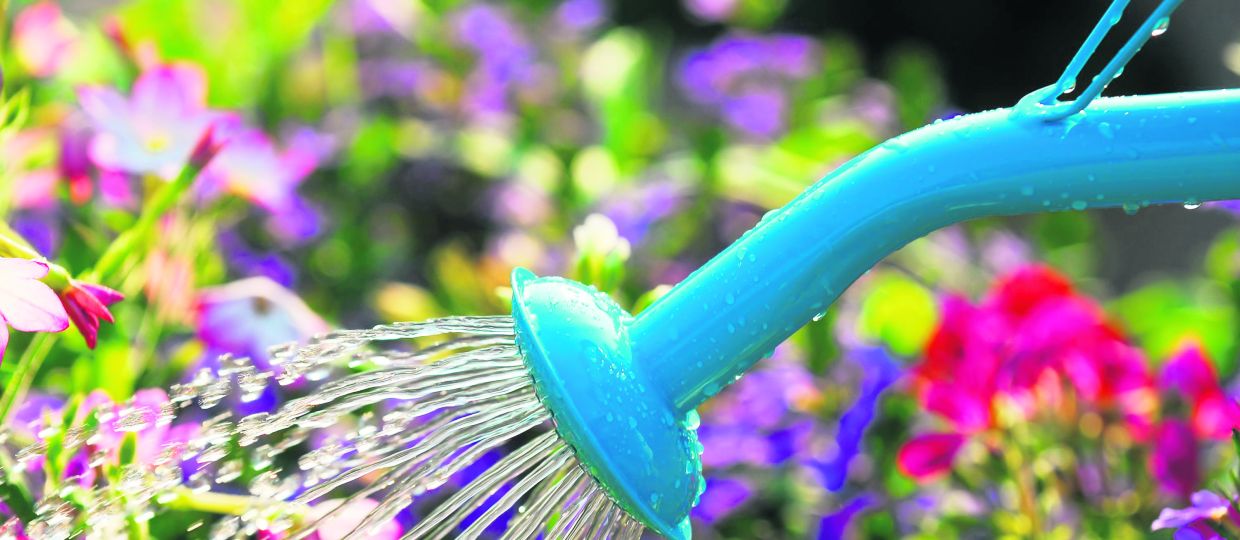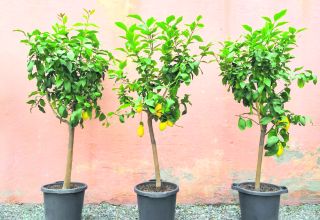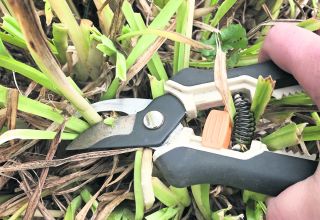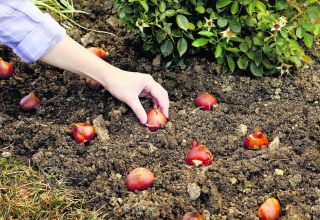This is often one of the hottest months of the year and a great time to sit out and enjoy your garden. Keep plants looking good by regularly deadheading, and you’ll enjoy a longer display of blooms. Make sure you keep new plants watered, using grey water where possible. August is also the time to be trimming hedges and cutting back on strawberries.
1. Water patio containers
Remember that plants in patio containers are dependent on you for their water as they’ll get little benefit from any rain. Give them a good soak at least once a day in sunny weather.
Towards the end of the month, even containers which had controlled-release fertiliser added to the compost at planting time will start to run out of steam, so begin feeding once a week with a tomato feed.
Remove spent flowers as they fade.
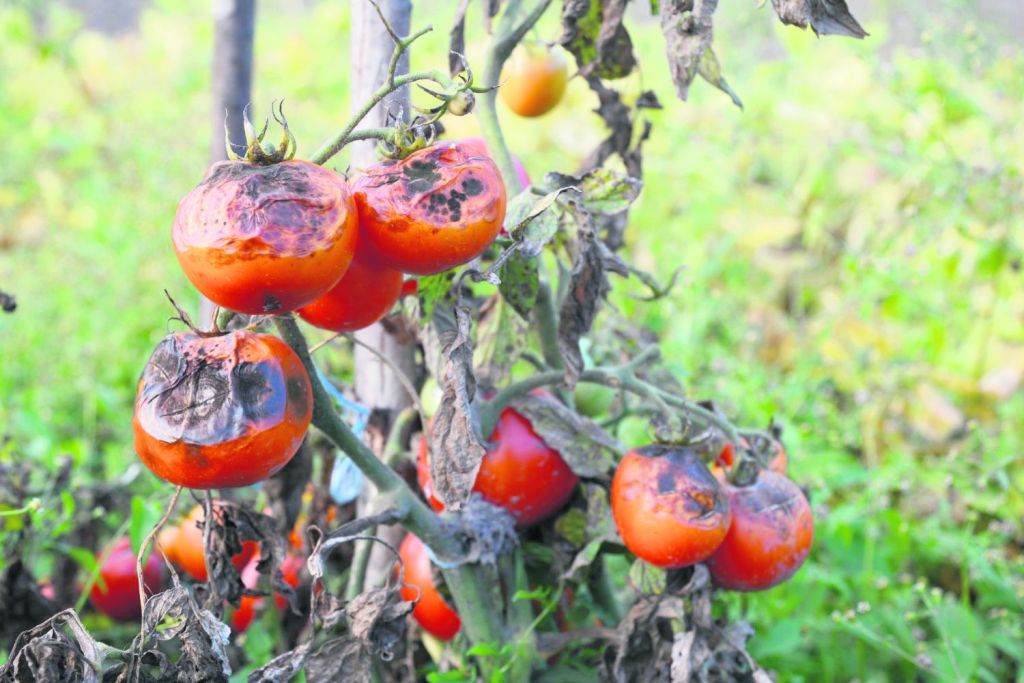
2. Watch out for blight on potatoes and tomatoes
Watch for any signs of blight on potatoes and tomatoes. Keep leaves dry on undercover tomatoes as blight enters the plant when the leaves are wet.
The first signs of blight on tomatoes are large, dark-brown spots on the stems. Similar brown patches appear on the leaves but they are lighter in colour or grey. Some fruits develop dark ‘bruising’ and smell bad. If you spot an infected plant, pull it up. The first signs of blight in potatoes are small, dark areas, often on the edges of leaves. Infected tubers have brown and purple skin blotches that go into the tubers. If you spot blight on the leaves, cut off all the top growth to stop fungal spores spreading to the tubers underground. Then wait two weeks before lifting them.
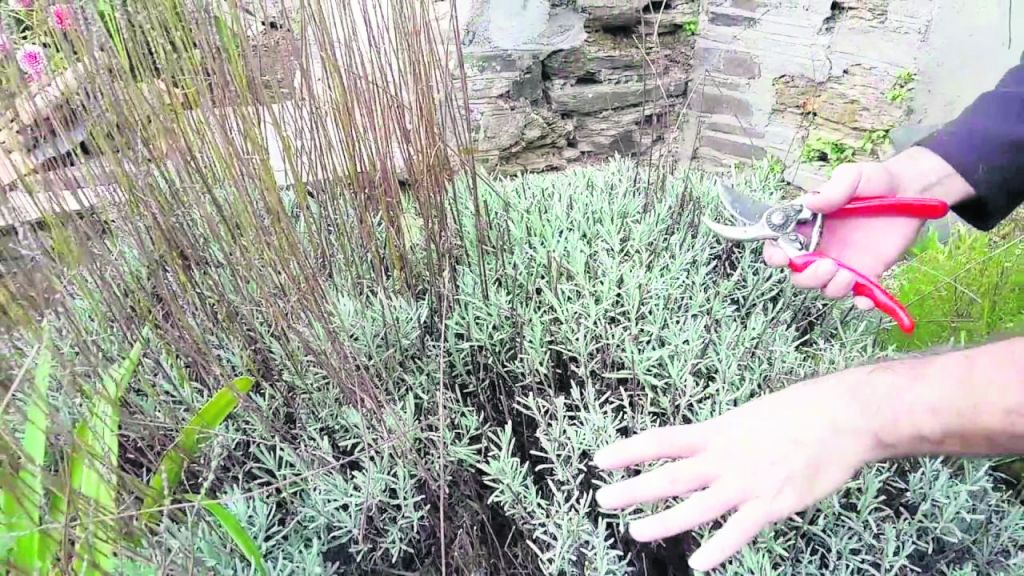
3. Cut back lavender
Light pruning helps to keep lavender compact and rounded, rather than leggy and bare at the base. Use shears to trim away the old flowering spikes and the top three cms of leaves. Full garden trials have shown you can prune in late summer or wait until spring as the timing makes no difference.
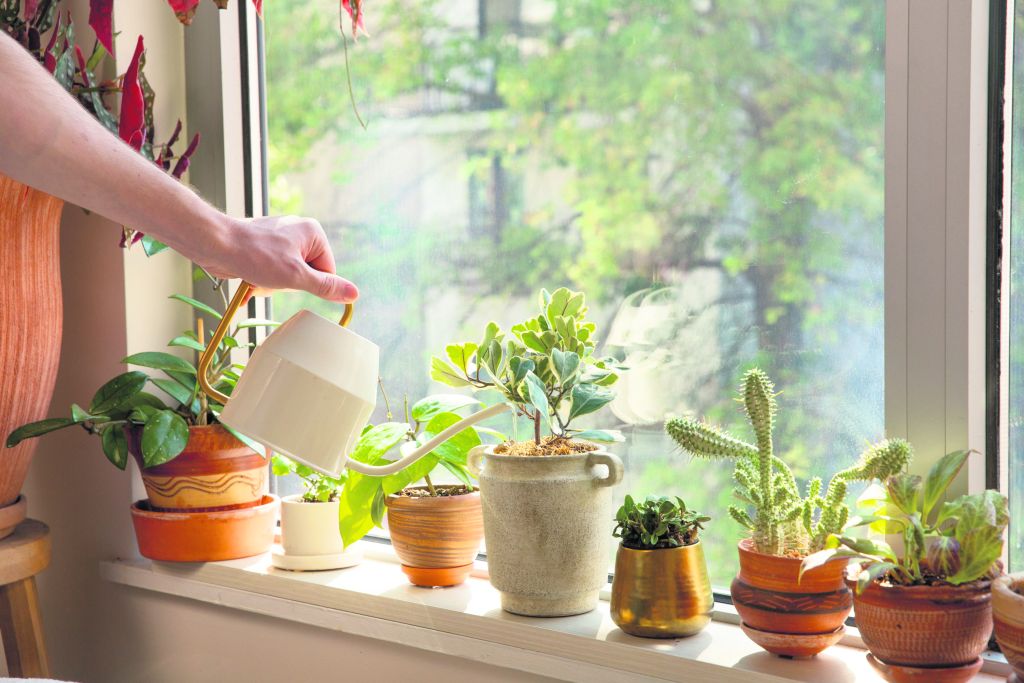
4. Caring for houseplants: summer holidays
Most houseplants will tolerate a few days’ absence without suffering, but absences of more than a week call for some creative measures to provide valuable moisture in the right quantity.
In the case of short absences during the summer, giving plants a thorough watering before going away may be sufficient. Moving them to a cooler room or away from a bright window will help prevent them drying out. For longer absences special measures can be taken to prevent the plant suffering or dying. These are based on providing a reservoir of water for the plant to draw on. You can place a sheet of capillary matting on the kitchen sink draining board or a suitable surface next to the bath. Drape one end of the matting into the sink or bath, which is filled with water. Plants should be grouped on the wet matting, ensuring they make good contact with it by pressing them down slightly. Clay pots need a thorough watering first for them to start drawing up water from the mat.
5. Lift any remaining maincrop potatoes
Choose a warm, sunny day and leave the potatoes on top of the soil to give the skins a chance to dry out fully before you store them. This way they will be much less likely to rot.
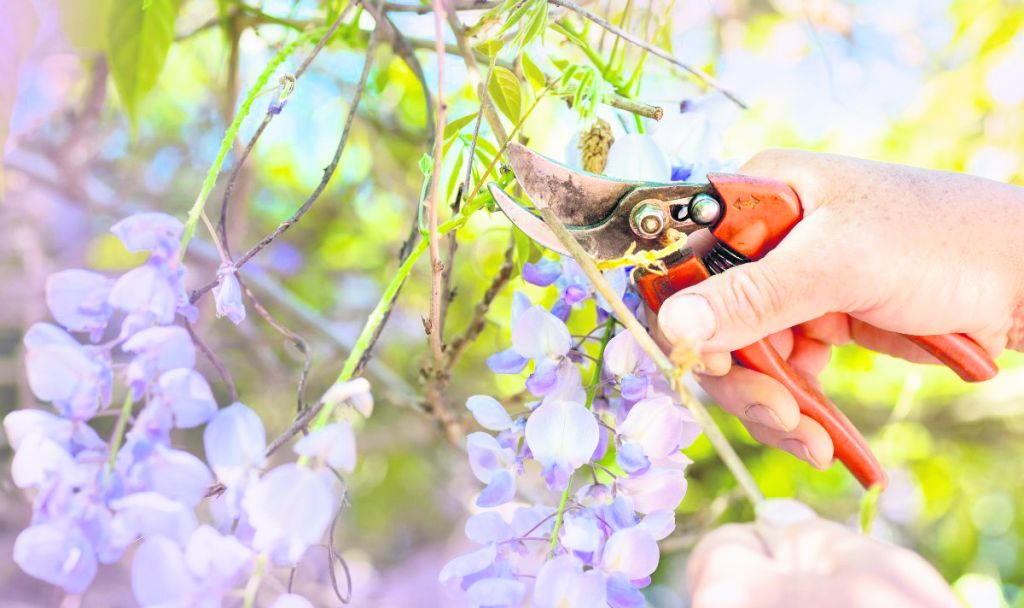
6. Timing is everything with wisteria
Wisteria needs be pruned twice a year to maintain its beauty. It will require pruning in January or February then again July or August. This will ensure the plant is kept in good shape and size and it will provide a better display when flowering.
Cutting back now – remove the young green stems that have developed this year down to around five leaves after flowering. The removal of growth in summer allows better air circulation and more sunlight to reach the base of the young growths, encouraging better ripening of the wood and improving the chances of flowering.
A bud is a small, undeveloped shoot that contains the potential for new growth. Buds are typically found on stems, where they can be apical (found at the tip) or axillary (found between leaf axils) and may develop into leaves, shoots or flowers.
Restricting the amount of vegetative growth and encouraging short, flowering spurs will result in more flowers.
There is lots to know about wisteria but if you are new to tending to them, take one step at a time and learn as you go.
7. Cut back and refresh your herbs
Whether you’re looking to flavour your meat or garnish your cocktails, herbs are the plant of the moment and a fantastic addition to gardens of all sizes. Cut back herbs, such as chives, mint and parsley, that are looking tired. This will encourage fresh new growth for a continued supply of leaves for summer dining. Oregano and thyme are perennial herbs which mean they grow back each year without needing to be replanted. To promote their growth each year, trim them in August before the winter months to ensure they withstand the frost.
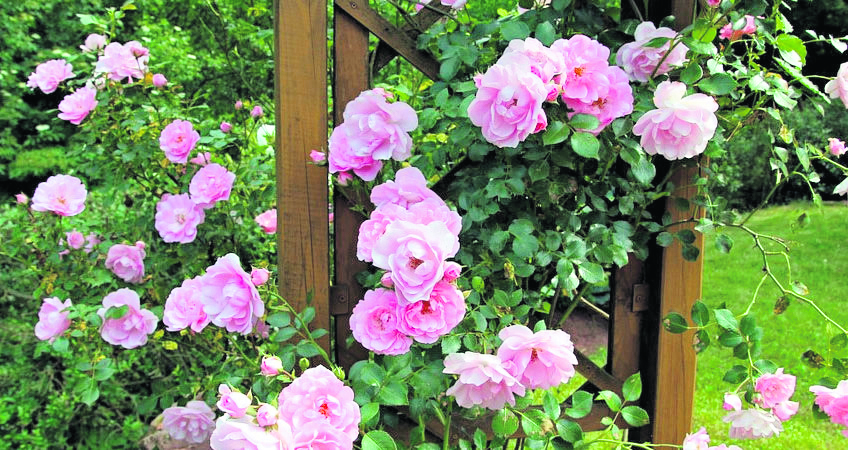
8. Encourage roses to go for another display
Our much-loved roses requires a little maintenance this month to ensure they bloom again before the season is out. Many roses will put on another display of fresh blooms, particularly many of the varieties which have been selected for their fragrance and long season of flower colour. Dead head spent blooms and boost with rose fertiliser to encourage healthy growth and a late summer display.
Tie in whippy growths on rambling roses to bear next year’s trusses of flower, positioning each stem as near to horizontal as possible. Training new growth in this way helps to encourage a prolific flower display along their length.
9. Here’s how to look after your grass this month
Don’t worry if your lawn is looking brown, the autumn rains will soon make it green again.
Don’t feed your lawn with a high-nitrogen fertiliser now as this will encourage lots of lush new growth which is easily damaged by autumn weather.
Lawn growth slows down in late summer so raise the cutting height of your lawn mower to help the grass cope.
If you’re planning on laying a new lawn this autumn, prepare the area now to give it time to settle.
Recut any lawn edges. Install lawn edging to make future maintenance easier.
If your lawn is infested by ants, brush out the nests on a dry day. Always brush them away before mowing.
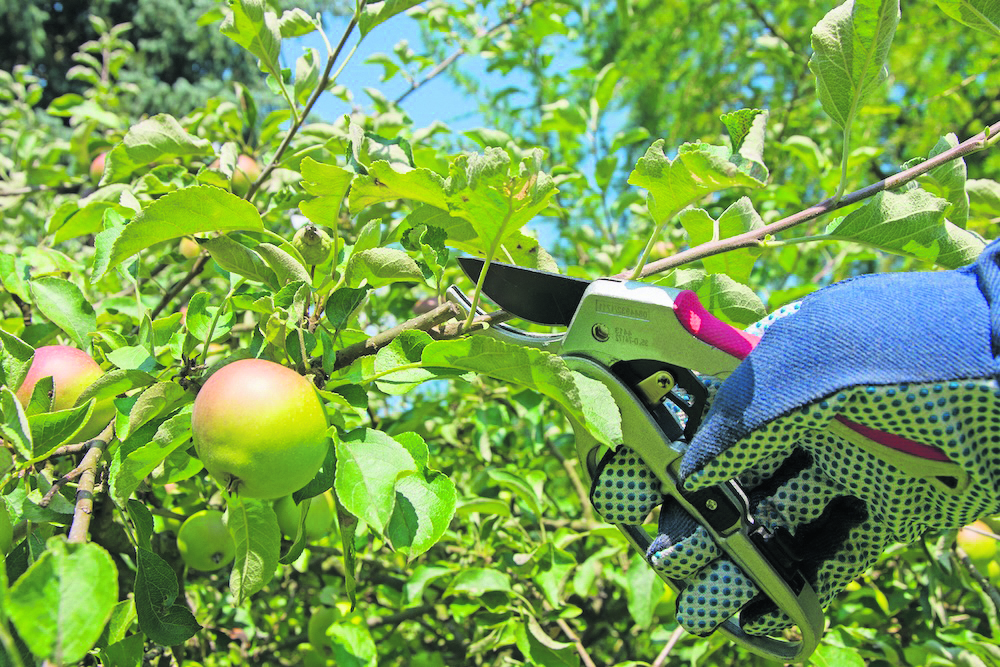
10. Apples and pears: summer pruning
Summer pruning apples and pears allows sunlight to ripen the fruit and ensures good cropping the following year. This is the main method of pruning for restricted forms such as cordons, espaliers, fans and pyramids. Summer prune when the bottom third of the new shoots is stiff and woody. Generally, this will be from late-July for pears and mid- to late August for apples and about ten days later in the north. To reduce the possibility of secondary growth it can be delayed until September, when larger terminal (end) buds have formed at the shoot tips and the shoots have stopped growing.
New shoots are stiff and woody along their bottom third, with dark green leaves and a cluster of leaves at the base. Cut back new shoots (laterals) more than 20cm (8in) long growing from the main stem to three leaves above the basal cluster of leaves. Do not prune new shoots that are less than 20cm long as they usually terminate in fruit buds. Cut back new shoots growing from existing sideshoots (sub-laterals) to one leaf above the basal cluster. Remove any upright, vigorous growth completely.

